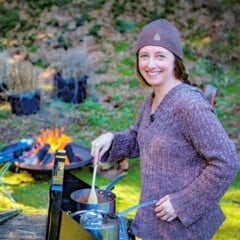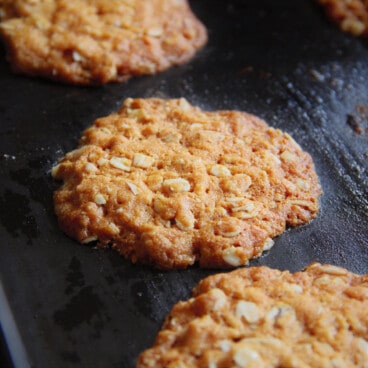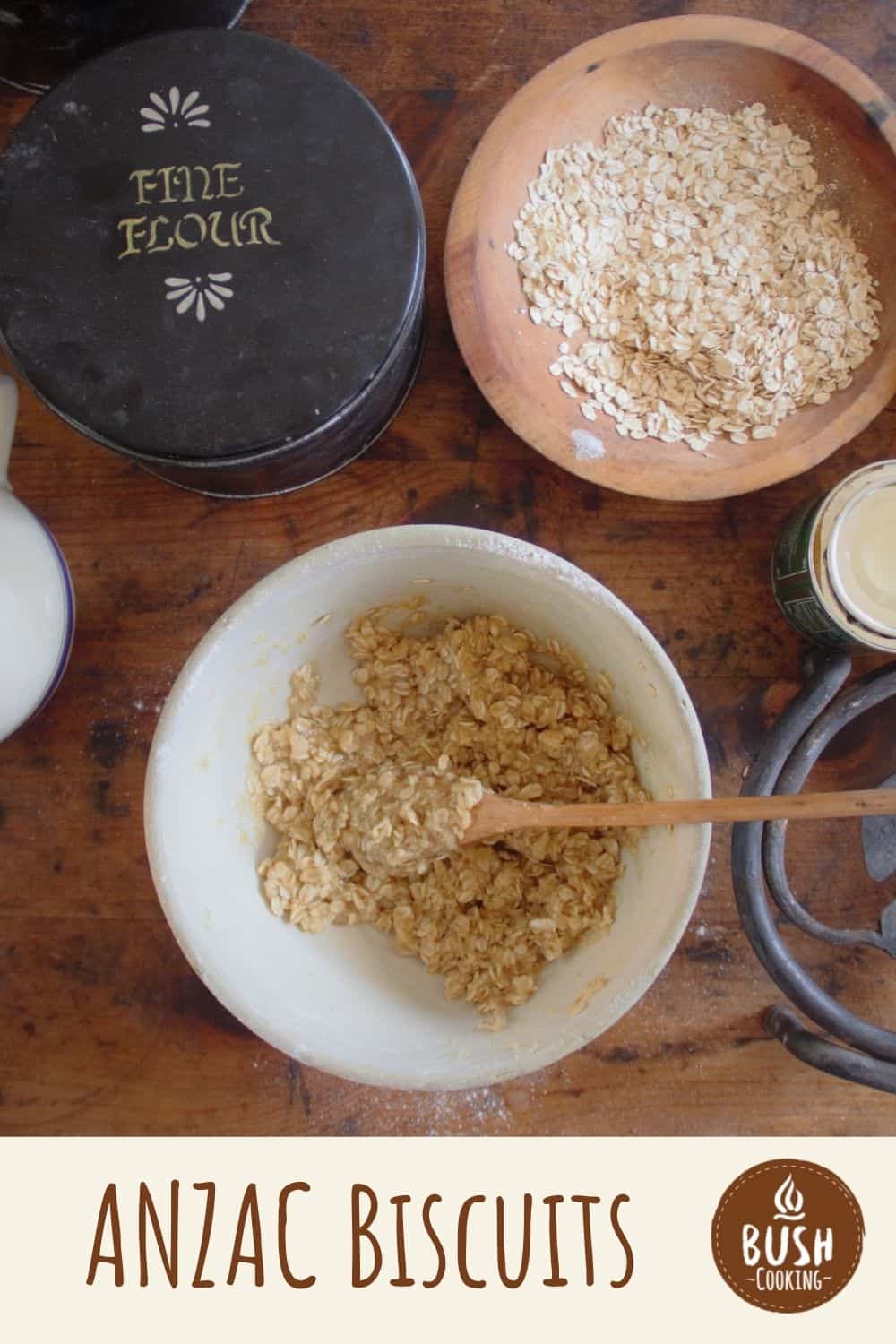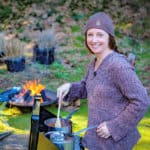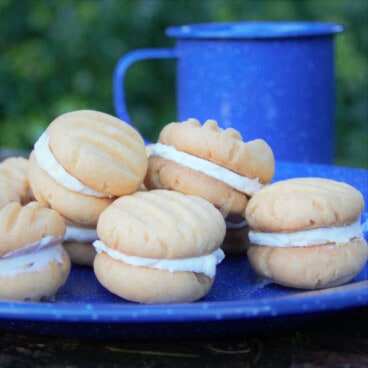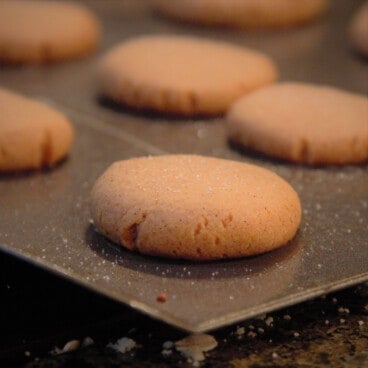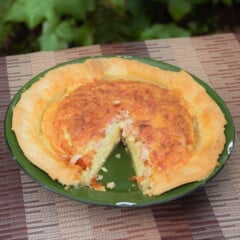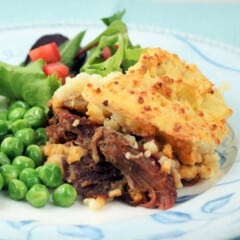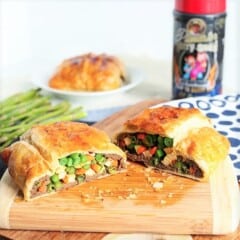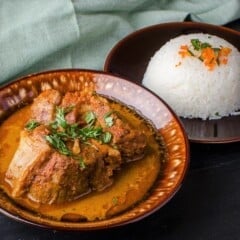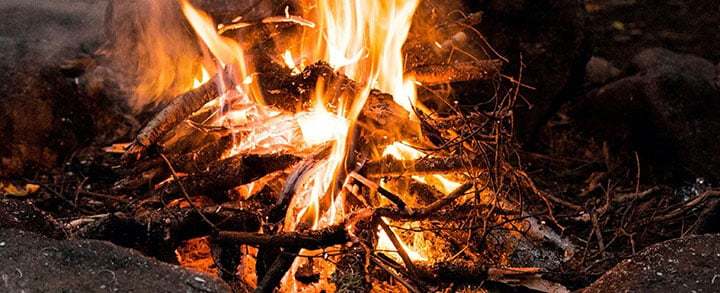ANZAC stands for Australian New Zealand Army Corps. These oat-based biscuits have a history going back to the First World War and the ANZAC troops. Now they have become a significant element of the annual ANZAC Day celebrations.
The biscuit themselves are traditionally very dry and don’t use eggs. This makes them good to send in care packages to deployed troops without spoiling. For the same reason, they are an ideal biscuit to take outdoors today.
Although history is a little foggy, the main purpose of these biscuits appears to be as a common item sold at fundraisers for the war effort. Additions of coconut, and/or nuts, as well as the softer chewier modern versions are all ones that appear later in history.

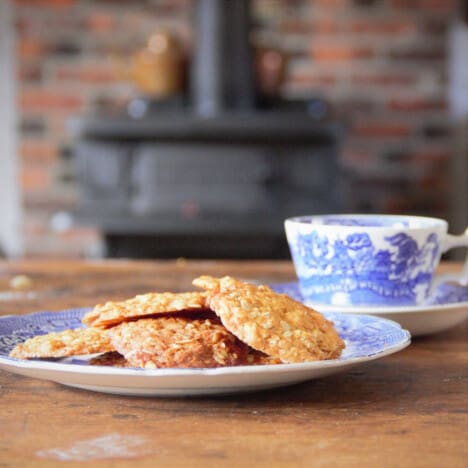
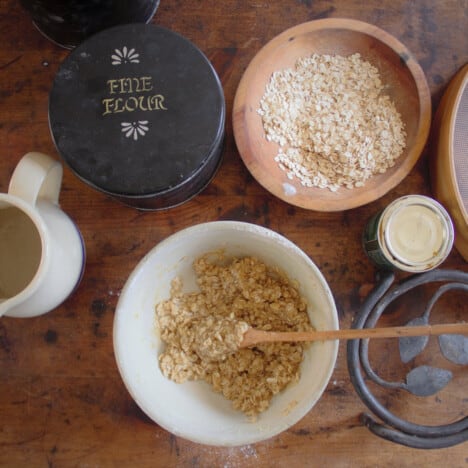
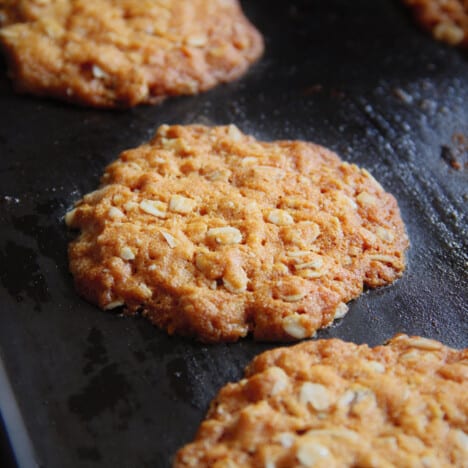
Traditional ANZAC Biscuits Recipe
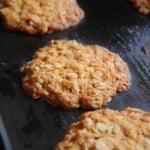
Ingredients
- 1 cup all-purpose flour
- 2 cups oats
- 3/4 cup white sugar
- 3/4 cup butter
- 1 tablespoon golden syrup honey, or treacle
- 1 teaspoon baking soda (bicarbonate soda)
- 2 tablespoons hot water
Equipment
- camp oven or wood-fired stove
- small saucepan or heatproof cup
Directions
- Preheat an oven, camp oven, or wood-fired stove to 350 degrees F (180 degrees C).
- In a bowl combine the flour, oats, and sugar.
- In a small saucepan or heat-proof cup, gently heat the butter and golden syrup until the butter has fully melted.
- Combine the baking soda and hot water, stir then mix into the butter mixture. This will cause it to froth up, as soon as this happens, stir it into the dry ingredients.
- Grease a tray then add balls of the mixture and press down to flatten. Note they will continue to spread during cooking so leave a generous amount of space between them.
- Bake for about 10 minutes, or until brown all over. When you take them out they will still be very soft. Let them sit on the cooking tray for about 10 minutes to cool and firm up, then they can easily be removed. The traditional biscuits were thin, crisp, and dry, ideal for long-term storage. If you like them soft and chewy, cook for less time so they remain moister and chewier.
Nutritional Information
More Biscuit Recipes
Camp Oven
Melting Moments Biscuits
Camp Oven
Ginger Snaps
Camp Cooking
